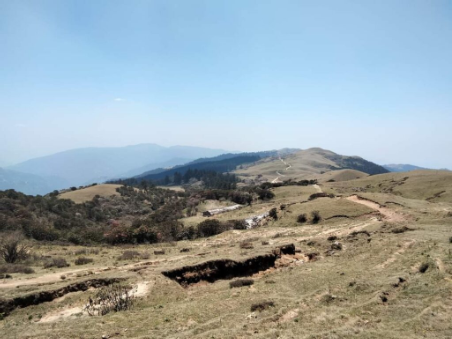Everest is a name that resonates with mountaineers and trekkers worldwide, drawing adventurers to the towering peaks of the Himalayas. While many opt for the classic routes like the Everest Base Camp or Gokyo Lakes Trek, a lesser-known yet equally rewarding experience lies in the Pike Trekking in Everest. This trek offers breathtaking views, cultural immersion, and a more serene alternative to the often-crowded routes. Let’s delve into why Pike Trekking in Everest should be on your bucket list.
What is Pike Trekking?
Pike Trekking is a relatively new trekking route situated in the Solu Khumbu region, a region that is part of the broader Everest National Park. It offers trekkers an opportunity to experience stunning views of the Everest massif without the hustle and bustle of more famous trails. The trek takes you to Pike Peak, which stands at an elevation of 4,065 meters (13,335 feet) and provides an incredible panoramic view of the Everest range.
The route passes through quaint Sherpa villages, lush forests, and Buddhist monasteries, offering a peaceful yet captivating trekking experience. Unlike the busy trails leading to Everest Base Camp, Pike Trekking promises a quieter journey, allowing trekkers to fully immerse themselves in nature and local culture.
Highlights of Pike Trekking
- Stunning Views: The summit of Pike Peak offers one of the best panoramic views of the Everest range, including Everest, Makalu, Lhotse, and Nuptse. On a clear day, trekkers are rewarded with a sunrise view that is truly spectacular, with the first rays of the sun lighting up the snow-capped peaks.
- Cultural Encounters: As you trek through the region, you will encounter the Sherpa people, known for their hospitality and rich cultural heritage. The trail passes through several traditional villages where trekkers can observe the local way of life and interact with the locals.
- Solitude: One of the most appealing aspects of Pike Trekking is the tranquility it offers. Unlike the crowded Everest Base Camp trek, this route sees fewer trekkers, which means you can enjoy the serene surroundings and the untouched beauty of the Himalayas.
- Natural Beauty: From dense rhododendron forests to alpine meadows, the landscape on the Pike Trek is diverse and striking. The trek also takes you through picturesque valleys, cascading rivers, and tranquil lakes, making it a nature lover’s paradise.
When to Go for Pike Trekking?
The ideal time for Pike Trekking is during the spring (March to May) and autumn (September to November) months. These seasons offer clear skies and moderate temperatures, ensuring optimal trekking conditions. Spring brings the region to life with blooming flowers, while autumn offers crisp air and incredible visibility.
Winter (December to February) can be harsh, with heavy snow and freezing temperatures, making it less suitable for trekking. Similarly, the monsoon season (June to August) brings heavy rainfall, which can make the trails slippery and difficult.
Trekking Routes and Difficulty Level
The Pike Trekking route is considered moderate in difficulty, making it suitable for trekkers with a reasonable level of fitness. The trek typically lasts between 5 to 7 days, depending on your pace and itinerary. The standard route starts from Salleri, a town that is accessible by road from Kathmandu, and ends at Pike Peak.
Along the way, trekkers will pass through villages like Junbesi and Beni, where they can experience Sherpa culture and hospitality. The route involves steady ascents and descents, with the highest point being Pike Peak itself.
While the altitude is moderate, trekkers should still take precautions to avoid altitude sickness. It’s recommended to acclimatize properly and take regular rest breaks throughout the trek. The highest point, Pike Peak, is relatively lower than Everest Base Camp, making it a great choice for those who are not ready to tackle higher altitudes.
What to Expect on the Pike Trek
- Day 1: Arrival in Salleri – After arriving in Salleri, trekkers can rest before beginning their journey the following day.
- Day 2: Salleri to Beni – The trek starts with a relatively easy hike to Beni, a small village.
- Day 3: Beni to Junbesi – A moderate day of trekking takes you through lush forests and Sherpa villages.
- Day 4: Junbesi to Pike Peak – On this day, trekkers reach the summit of Pike Peak, where they can marvel at the panoramic views of the Everest range.
- Day 5: Pike Peak to Salleri – The return journey involves descending back through the villages and forests to Salleri.
Necessary Gear and Preparation
While Pike Trekking is not as strenuous as the Everest Base Camp trek, it’s still important to prepare adequately. Essential gear includes:
- Good hiking boots: Sturdy, comfortable boots are essential for navigating the sometimes rugged terrain.
- Layered clothing: Weather conditions can change quickly, so bring layers that can be added or removed as needed.
- Sleeping bag: A warm, four-season sleeping bag will keep you comfortable at night.
- Waterproof gear: In case of rain or snow, waterproof jackets and trousers are important.
- First aid kit: Be prepared for minor injuries or altitude sickness with a basic first aid kit.
Pike Trekking vs. Everest Base Camp Trek
| Feature | Pike Trekking | Everest Base Camp Trek |
| Crowd | Fewer trekkers, more solitude | Popular and crowded with trekkers |
| Difficulty | Moderate (suitable for most trekkers) | Challenging, requires physical fitness |
| Altitude | 4,065 meters (Pike Peak) | 5,364 meters (Everest Base Camp) |
| Duration | 5-7 days | 12-14 days |
| Cultural Interaction | Sherpa villages and monasteries | Sherpa villages and monasteries |
| Views | Everest range, including Makalu and Lhotse | Everest, Lhotse, Nuptse |
Conclusion
Pike Trekking in Everest offers an unforgettable Himalayan adventure without the crowds typically associated with the Everest Base Camp trek. The stunning views, rich cultural experiences, and serene landscapes make this trek a hidden gem for those seeking peace and tranquility in the heart of the Everest region.
This trek is perfect for those who are looking for a challenging yet manageable hike, with the added bonus of breathtaking views and unique cultural insights. If you’re planning a trek to Everest, Pike Trekking should definitely be on your radar as a rewarding alternative.
Key Takeaways:
- Pike Trekking offers stunning panoramic views of Everest and surrounding peaks.
- It’s a more peaceful and less crowded alternative to the Everest Base Camp trek.
- The trek is of moderate difficulty, suitable for trekkers with basic fitness.
- Ideal trekking seasons are spring and autumn for optimal weather conditions.
- Trekking provides an opportunity to experience the Sherpa culture and local traditions.

